West Ham United Football Club is a symbol of East London’s working class heritage, a team with huge connection with its supporters and fans. The club began as Thames Ironworks FC and became a powerhouse in the Premier League era. In its entire history, West Ham experienced glorious triumphs, heartbreaking defeats and transformations.
The identity of West Ham United is strong due to its deep roots with the community. Its history is filled with hardworking, blue-collar culture of East London, with multiple generations of fans showing their love for the Hammers. The famous claret and blue colors mean an immense pride in the streets of the London Stadium or in the heart of Upton Park, where West Ham built its legacy over a century.
In this article, I’ll show you the history of West Ham United, with amazing moments of the club, legendary players, the club’s youth development system and decisions that were important to its journey. This journey through the past of West Ham United will give you a greater appreciation for what makes the club very special!
Table of Contents
- History of West Ham United: Rise, Glory and Legacy of the Hammers
- Club’s History
- Legacy of West Ham United Football Club
- Start an Amazing Journey with FootballTeam
Origins and Early Years (1895 – 1919)

The history of West Ham United FC begins in 1895, not under its current name, but as Thames Ironworks FC. The club was formed as the team of the Thames Ironworks and Shipbuilding Company based in Canning Town, East London. The owner of the company, Arnold Hills, an English businessman, was a supporter of sports and believed in the value of healthy living and community spirit through football.
Arnold Hills had a dream: create a team that represented the working-class people of East London, giving them a ground to play and enjoy the game. The first professional football team, Thames Ironworks FC, started playing at the Hermit Road ground, competing in local leagues such as the London League and later the Southern League.
The team was made up of shipyard workers, and its early years were built with a strong work ethic and a commitment to team spirit over individual talent. The first match of the club was in 1895, against Chatham Town. But Thames Ironworks were defeated in its home ground by 5-0.
Name Change and Brand Expanding
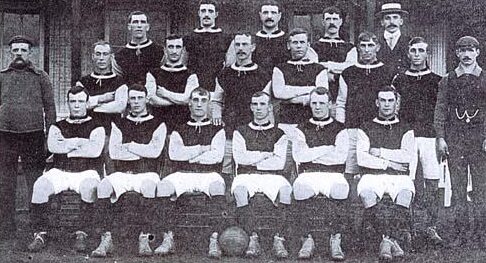
In 1900, Arnold Hills and club secretary Francis Payne rebranded and relaunched the club as West Ham United FC. This strategic move aimed to shed the club’s industrial image and transform it into a professional football entity capable of competing at a national level.
The team took on the claret and blue colours after a friendly match with Aston Villa, drawing inspiration from their opponents. The clubs agreed to adopt similar shirts as part of the arrangement.
These colors would become an iconic part of the club until today and part of West Ham’s identity, representing the club for generations to come for many years.
Football League Second Division Invitation
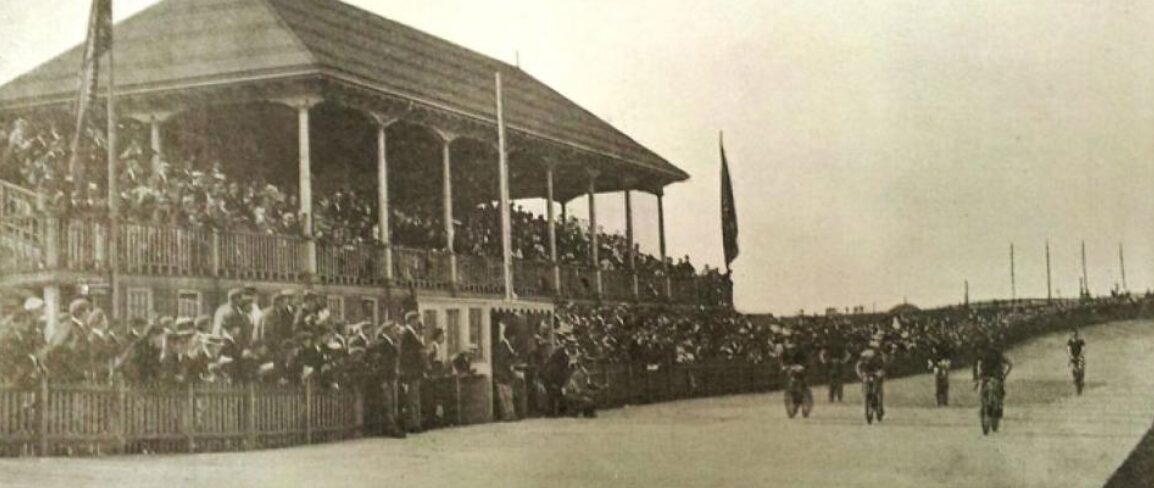
The early years in the Southern League for West Ham United were challenging, but the club showed signs of progress. The team moved to the Memorial Grounds in 1904, called Memorial Recreation Ground today, a new stadium built to accommodate their growing fanbase.
However, the biggest achievement came in 1919, when West Ham won an invitation to join the Football League Second Division, a big step for the Hammers. This promotion marked the entry of West Ham United into the professional ranks of English football, and could compete against the biggest teams in the country.
Before the Football League Second Division, Arnold Hills led West Ham to some achievements, such as Western League in the 1906/07 season and the London League. Even if the club didn’t win major trophies yet, its foundation was established and the passion of its supporters was ready to begin a new journey.
Growth and Establishment (1920s – 1930s)

The 1920s began a new chapter in the club’s history, as the club grew in English football. Following their promotion to the Football League Second Division in 1919, West Ham United quickly adapted to the needs of professional football. West Ham United’s transformation from a working team to a professional club was a gradual process, but the team’s improvements to its squad and infrastructure marked the beginning of its new identity as a professional club.
During these years, West Ham attracted biggest talents in the region of London and improved their performances on the pitch. And as a result, the club reached the FA Cup final for the first time in their history. The final was played at Wembley Stadium and was won by Bolton Wanderers 2-0. West Ham didn’t score goals, but Boston’s goals were scored by David Jack and Jack Smith.
Hundreds of thousands of fans turned up, far exceeding Wembley’s official capacity of 127,000. With no proper crowd control, fans spilled onto the pitch. A mounted policeman named George Scorey, riding a white horse named Billy, helped push the crowd back, allowing the match to start. The iconic images of Billy among the sea of fans led to the match being dubbed the “White Horse Final.”
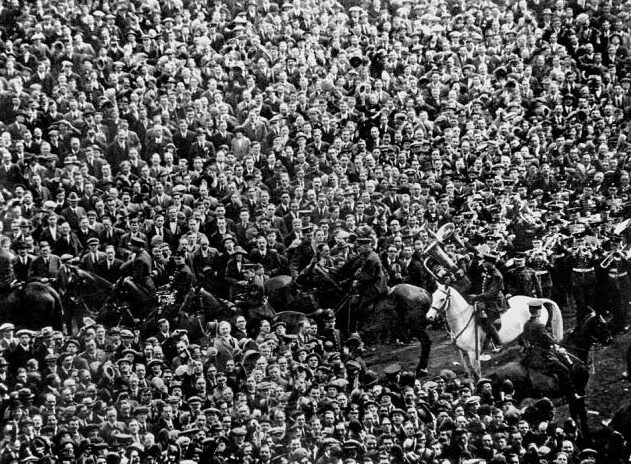
The 1920s started the establishment of West Ham United as regular competitors in the Football League and in English football. Still in the 1922/23 season, the club managed to overcome the Football League Second Division.
West Ham United was promoted to the Football League First Division in the 1923/24 season, after finishing second in the previous season, just two points behind Notts County. The club finished mid-table, in thirteenth place, in its first season in the Football League First Division. The club continued to have mid-table finishes for the rest of the decade and was almost never in danger of being relegated.
The 1930s was another important decade for West Ham, with the club continuing their commitment to establish themselves in the top tiers of English football. The 1930s came with new challenges and competition, as other clubs began to emerge as rivals for the league title.
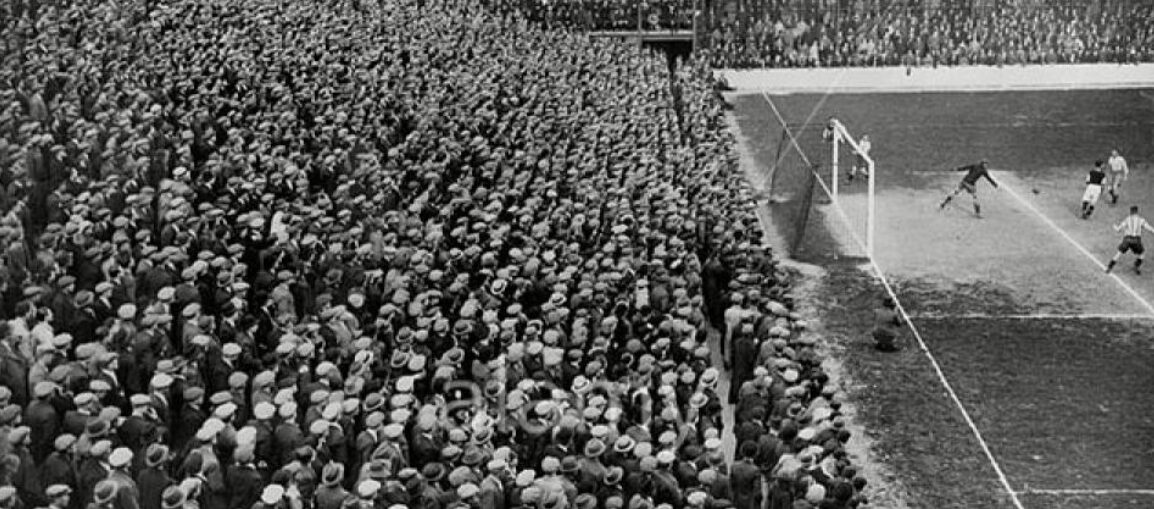
Charlie Paynter managed West Ham for 18 years, but the club’s stability started to decline under his leadership. In the 1931/32 season, West Ham was relegated from the Football League First Division after almost ten years. The team finished last in the league table with only 31 points, needing just one more win to avoid relegation.
Under Paynter, the club played in the Football League Second Division throughout the decade, always flirting with the first positions to be promoted again, but failed. The club reached the third position in the 1934/35 season, but only two clubs were promoted.
The 1930s saw West Ham United gain recognition and tradition in the Football League Second Division. However, the outbreak of World War II led to a six-year hiatus in football, halting the club’s continuous development in English football.
Post-War Years and the Academy of Football (1940s – 1950s)
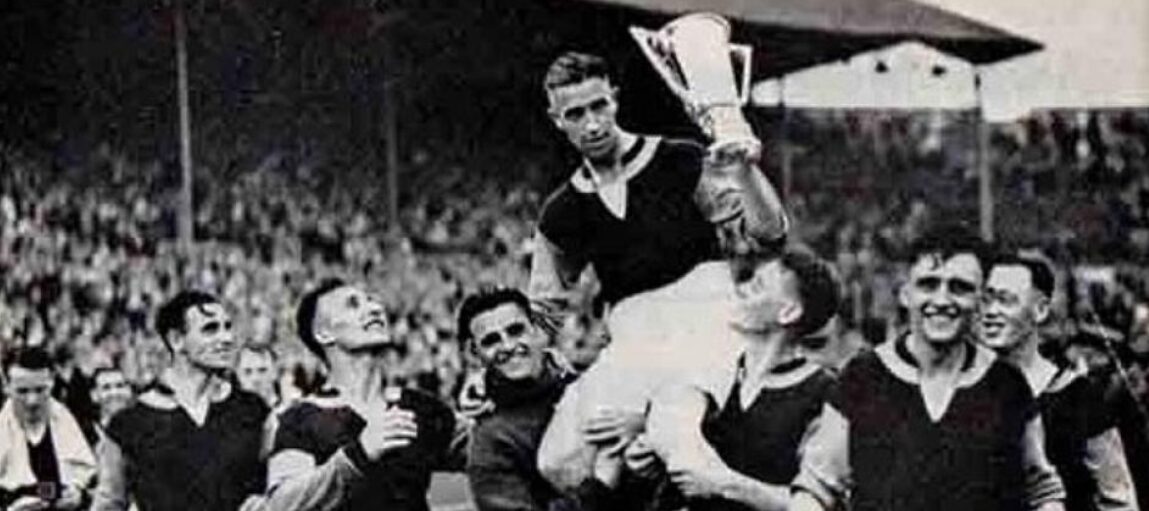
The end of World War II in 1945 began a new period for West Ham United Football Club, but like many clubs in England and Europe, they faced challenges after the end of the war. The war destroyed the footballing calendar and the football clubs, with players returning from military service and the infrastructure of sports with several problems.
In the late 1940s, West Ham began to re-establish its club in the Football League Second Division, and once again, with mid-table campaigns. During this period, the club was still going through a period of transition and reconstruction, but with the arrival of new talented players to the squad, the appearances began to change and improve.
After the war, the team’s roster steadily improved, and supporters started to have faith in the club’s future.
Academy of Football

One of the most significant contributions to the success of West Ham United during the 1940s and 1950s was the Academy of Football, with Ted Fenton, a manager who created a philosophy based on scouting, recruiting, and developing the best young players from the local area.
The club invested in its club’s youth development system, recognizing the importance of recruiting and developing young football players from the local community. This philosophy helped the club to compete at a higher level and played a crucial role in producing some of the most iconic players in West Ham’s history.
During the 1950s, the Academy of Football began to show results, producing a new generation of players who would become club legends, such as John Bond. He was a former English football player who joined the first team in 1951. John played almost 400 games with West Ham United and scored 32 goals.
John Bond helped the club maintain its place in the Second Division. Alongside him, players like Jimmy Andrews and Frank O’Farrell left their mark, contributing to the club’s period of stability.
Young Talents and Academy of Football Result
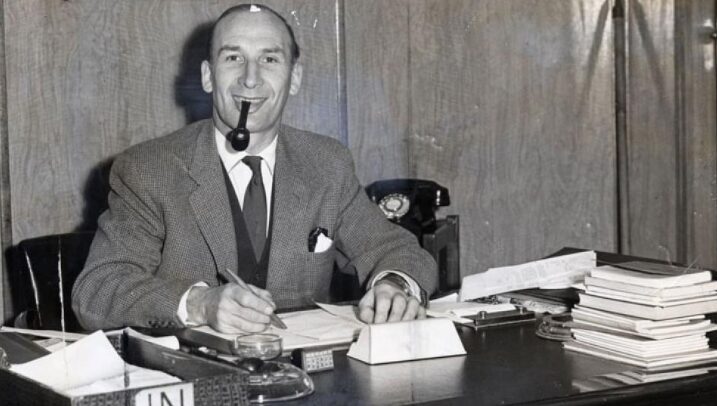
The 1950s had the arrival of some new faces in the managerial staff, with Ted Fenton as the manager of the club in 1950. Fenton, was a former footballer, who played more than 12 years for West Ham United and returned after his retirement as coach.
Under Fenton, the club began its journey to establish themselves as one of the greatest teams in English football. With his philosophy, known as the Academy of Football, the club began to have greater influence in national football.
In the late 1950s, more precisely in the 1957/58 season, after almost thirty years away from the First Division, the club won the Football League Second Division and qualified for the elite of English football. West Ham won the second division with 57 points, only one point ahead of Blackburn Rovers.
At the end of the decade, the Academy of Football was already established within the club and preparing for a decade of great success. West Ham United’s focus on developing its young talents from the London region worked well and created a new identity for the London club in the 1960s.
Golden Era: 1960s and European Glory
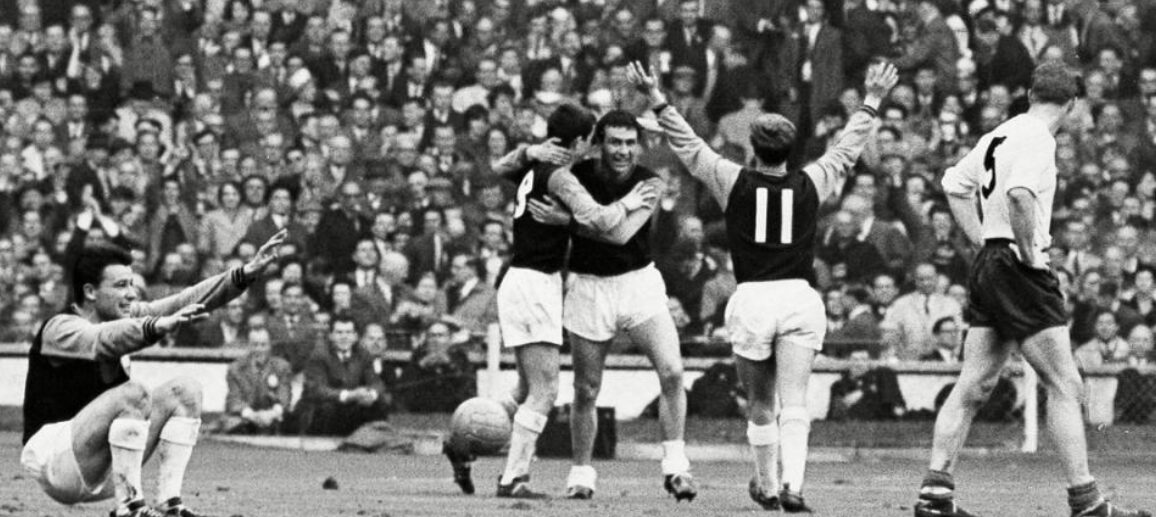
The 1950s was, maybe, the best decade of West Ham United’s entire history. These years were the Golden Era of the club. The club appointed Ron Greenwood as manager and began a period of huge success in the 1961/62 season. Ron Greenwood spent more than 13 years of his managerial career as West Ham’s coach.
Under Greenwood, West Ham United enjoyed its best years. The FA Cup victory in 1964 was the club’s first major trophy. The final took place in London, at Wembley Stadium. The game was between West Ham United and Preston North End. In the stands, more than 100,000 fans watched the grand final.
The score was tied 2-2 until the 90th minute, when Ronald Boyce scored a goal in injury time, securing West Ham’s victory in the 1963/64 FA Cup.
1964/65 European Cup Winners’ Cup

But West Ham’s ambition didn’t stop there. The same year, they won the European Cup Winners’ Cup, defeating 1860 Munich 2-0 in the final. The game took place a few days after the FA Cup final, and was also hosted at Wembley Stadium in London. The game ended 2-0, with two goals scored by Alan Sealey.
These goals were scored practically consecutively one after the other, both in the second time, at 70th and 72th minutes, decreeing West Ham as champion of the European Cup WInners’ Cup in the 1964/65 season.
With the victory, the club finally achieved recognition in Europe, and it was becoming clear to other giant teams in the continent that West Ham United would soon become a European football powerhouse.
1964 FA Charity Shield (Shared Title)

In August 1964, West Ham United had the opportunity to compete in the FA Charity Shield. This game was held between the First Division and FA Cup champions. Since Liverpool had won the First Division, they played against West Ham United at Anfield, Liverpool’s stadium.
The 1964 FA Charity Shield ended in a 2-2 draw between Liverpool and West Ham, resulting in both teams sharing the championship title and each taking home a trophy. Liverpool’s goals were scored by Gordon Wallace and Gerald Byrne, while West Ham’s goals came from Hurst and John Byrne.
The 1960s was also important due the rise of some of the greatest players in the club’s history, with Bobby Moore, Geoff Hurst and Martin Peters becoming legends both for West Ham and the English national team. Moore played almost 550 games with West Ham and scored 24 goals, whereas Hurst had over 400 appearances and scored an incredible 180 goals.
Bobby Moore, who captained the English national team to their first and only FIFA World Cup victory in 1966, became a legend at West Ham United. Geoff Hurst, a teammate of Moore’s on that 1966 World Cup team, also became a hero at West Ham, after scoring three goals in the World Cup final.
Certainly the 1960s were the largest in the club’s history, and the Hammers were looking forward to the next few years to come, aiming to conquer new and greatest titles in England and Europe.
Ups and Downs (1970s – 1980s)

The 1970s and 1980s were a turbulent period for West Ham United, marked by both highs and lows. The early 1970s began with ambitious plans and soaring expectations following the club’s success in the 1960s. However, the club soon faced challenges in maintaining its position among the elite of English football.
In 1974, after leading the team to European and domestic cup victories, coach Ron Greenwood left to manage the England national team. His departure marked the beginning of a period of disappointing performances and poor campaigns in the First Division.
The club’s struggles culminated in relegation during the 1977/78 season, a devastating blow for both the club and its supporters. West Ham finished in twentieth place in the First Division, accumulating only 32 points. A mere single point would have saved them from relegation, but it was Queens Park Rangers who narrowly escaped.
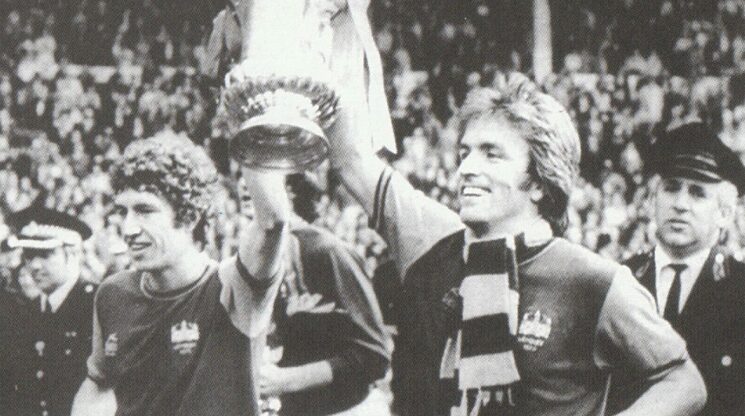
Before the relegation, West Ham won the 1974/75 FA Cup, when they defeated Fulham 2-0 in the final. The game was held at Wembley Stadium in London. More than 100,000 fans showed up to enjoy the FA Cup final.
And since only one team could emerge victorious, this team was West Ham United, which scored the two goals of the match with Alan Taylor, Both goals were scored in the second half, causing the West Ham players to lift the FA Cup trophy.
The club ended the 1970s like this, with a relegation to account but with an important achievement, the FA Cup title. The following years would be challenging for a club that was used to winning and will need strength to get back up.
There was still time in the late 1970s, when the club won another FA Cup. The final match took place again at the Wembley Stadium in London. The final was against one of its great rivals in the city, Arsenal. With a goal scored right at the beginning of the game, by Trevor Brooking, West Ham United managed the game until the end and won another FA Cup at the end of the decade.
Great Early Years in the 1980s
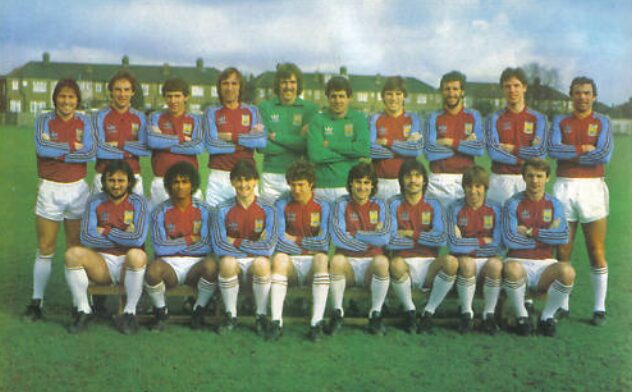
At the start of the 1980s, West Ham faced the challenge of promotion back to the First Division. The team, under the leadership of former player and coach John Lyall, retained talented homegrown players such as Brooking and Phil Parkes.
Despite the difficulties, the club reached the final of the Football League Cup (now Carabao Cup) in the early 1980s. Although they lost to Liverpool in a two-legged final, the achievement demonstrated West Ham’s ambition to compete at the highest level.
In the 1980/81 season, West Ham secured the Second Division championship with an impressive 66 points, 13 points ahead of Notts County. This victory marked their return to the First Division and fueled dreams of future success.
Successful Years in the Late 1980s
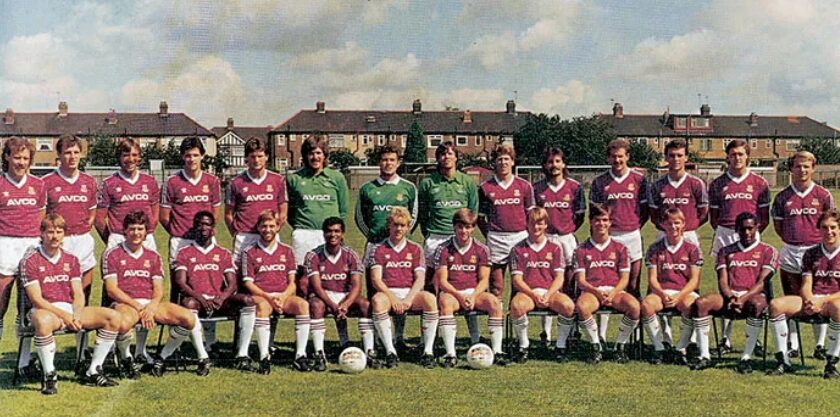
The 1985/86 season was the pinnacle of West Ham’s success under Lyall’s management, and their most successful of the 1980s. Led by Tony Cottee, Frank McAvennie, and Brooking, the team achieved their highest-ever league finish, coming in third in the First Division. Despite a strong showing with 84 points, they were ultimately outpaced by Liverpool’s 88 points and Everton’s 86.
However, this success was short-lived. The team’s performance declined towards the end of the decade, culminating in relegation during the 1988/89 season after finishing nineteenth with only 38 points. The decade ended in disappointment, but also with a sense of anticipation for a new era at West Ham United.
Premier League Era (1990s – 2000s)
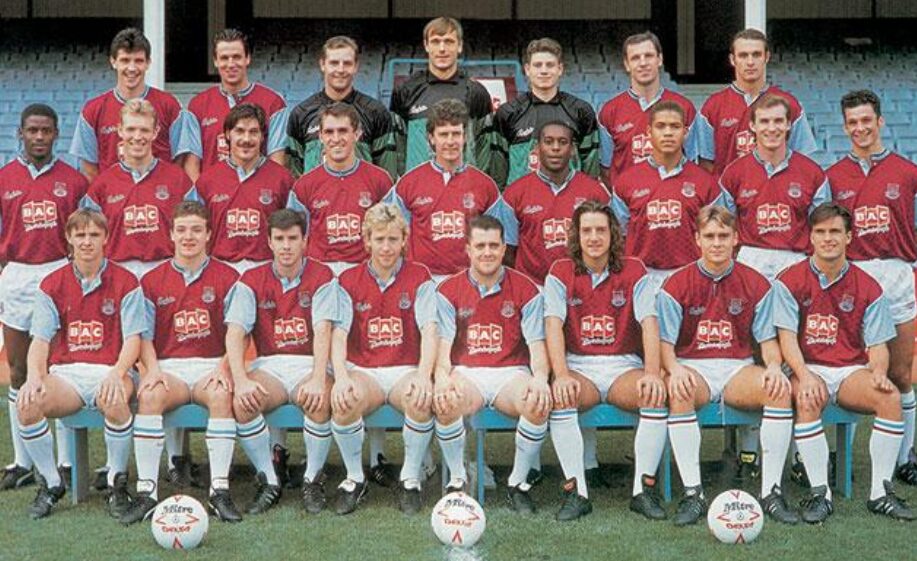
The 1990s began as a new chapter in the club’s history and for English football. The 1990s started very well, with the team placing second in the Second Division with 87 points and being promoted again to the First Division.
This may be a bit confusing, but I’ll clarify. During the 1991/92 season, the club competed in the First Division. However, the Premier League was set to become the top tier of English football at the season’s end. As a result, teams remaining in the First Division at the end of the 1991/92 season would automatically qualify for the Premier League. Relegated teams would stay in the First Division, which would then become the second tier of English football, and in later years, be renamed the EFL Championship.
So, the club was relegated in the 1991/92 season and didn’t achieve the promotion to the Premier League era. In the 1992/93 season, the club quickly established itself in the Football League First Division (now, the second division in England), and reached the second place with 88 points, only behind the champion, Newcastle United with 96 points.
First Season in West Ham’s Premier League (1993/94)
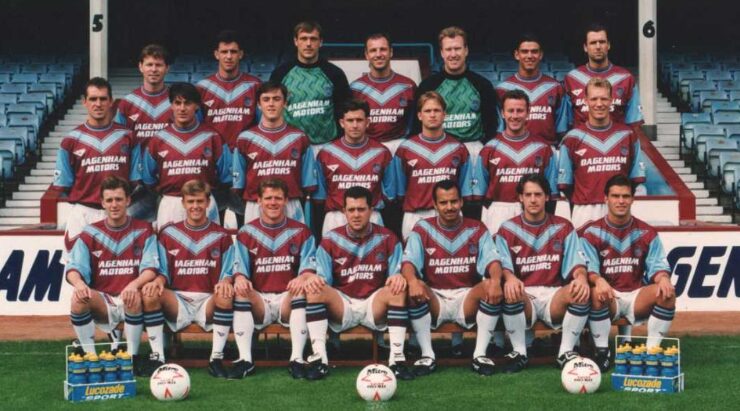
When Harry Redknapp, a former West Ham player, was hired in 1993, it was a turning point for the team. Redknapp revitalized the team by bringing hope to the club and maintaining the focus on developing young players. This led to the emergence of talented players from the youth academy, which was known as the Academy of Football.
Some of these players included Frank Lampard, who played almost 150 games and scored 24 goals for West Ham, and Rio Ferdinand, a strong defender who played over 120 games and scored 2 goals. Additionally, Joe Cole, who later played for Chelsea, scored 10 goals in over 120 games for West Ham. Finally, Michael Carrick, who went on to become a legend for Manchester United, played over 130 games and scored 6 goals for West Ham United.
During its first season in the Premier League, West Ham secured a spot in the middle of the table,finishing the national league in thirteenth place with 52 points.
Premier League’s Relegation and Return
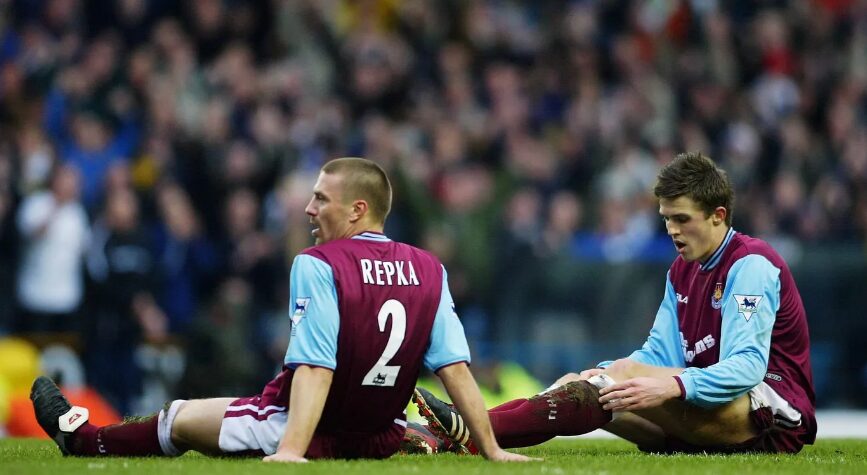
However, the late 1990s and early 2000s were periods of difficulty for the club, West Ham United faced financial struggles and lack of success in the Premier League, mostly finishing the league mid-table.
The club also had a good campaign in the 1998/99 season and qualified for the 1999 UEFA Intertoto Cup, coming out as one of the three champions of the tournament, beating Metz, a French team, in the final by 3-2 in the aggregate score. The other UEFA Intertoto Cup champions were Juventus and Montpellier.
One of the most difficult periods for the club came in the 2002/03 season, when they were relegated from the Premier League to the Football League First Division after ten seasons playing in the Premier League. The club was relegated with 42 points in the 18th place.
The club spent only two seasons in the second division until they reached sixth place and qualified for the play-offs. The club won the play-offs final against Preston North End by 1-0 and was promoted to the Premier League again.
Following their promotion, West Ham United spent the next ten years comfortably positioned in the middle of the league table, never truly threatened by relegation. However, their ambitions extended beyond mere survival; they sought to establish themselves among the league’s elite and secure a coveted spot in European competitions. The initial years in the Premier League proved challenging, but a period of success was on the horizon.
European Ambitions and Move to London Stadium (2010s – Present)
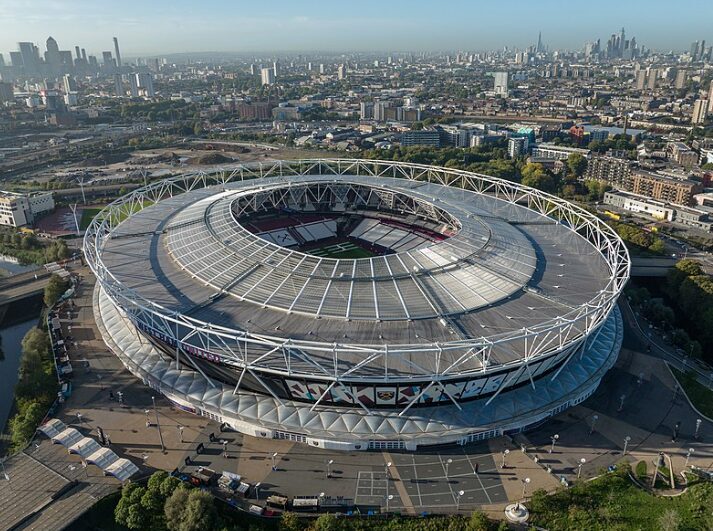
The 2010s were a decade marked by a change in ownership and a move from Upton Park to the London Stadium, formerly known as the Olympic Stadium. David Sullivan and David Gold took control of the club, acquiring 50 per cent of West Ham United, facing financial and structural challenges.
The decision to relocate to a larger stadium promised modernization and financial growth but faced resistance from fans who feared losing the atmosphere of Upton Park. Despite the struggles with its fans, the move was a strategic step for a competitive future.
The London Stadium has a capacity of almost 70,000 fans, and can reach 80,000 seats when it has events and concerts. The club has already spent more than 750 million pounds between building and renovating the stadium.
2022/23 UEFA Europa Conference League

David Moyes returned to West Ham United in 2019 after a sabbatical year and brought a period of resurgence for the team. In the 2020/21 season, the team earned 65 points to finish sixth in the Premier League and qualify for the UEFA Europa League for the first time in over a decade. West Ham had a strong run in the 2021/22 UEFA Europa League, reaching the semi-finals before being eliminated by Eintracht Frankfurt with 2-1 and 1-0 losses.
Despite the disappointment of losing in the Europa League, the club qualified for the UEFA Europa Conference League in 2022/23. The team dominated throughout the campaign and entered the final against Fiorentina as the favorite. West Ham won the final 2-1 with a dramatic goal by Jarrod Bowen in the 90th minute, securing their first major European trophy in over 50 years.
Legacy of West Ham United Football Club

West Ham United’s legacy is one of resolve, dignity, and an enduring bond with its supporters. The club’s journey from its inception as Thames Ironworks FC to its current status as a major English club is a testament to its unwavering spirit. The club’s contribution to the world of football extends beyond its on-field victories; it lies in the multitude of gifted players it has nurtured throughout its history.
The Academy of Football has produced legendary figures like Bobby Moore, Geoff Hurst, and Martin Peters, whose contributions to England’s 1966 FIFA World Cup triumph remain etched in football history.
However, the most profound and enduring aspect of West Ham’s legacy is its unbreakable connection with its fans. The passionate chants of “I’m Forever Blowing Bubbles” that resonate at London Stadium, formerly Upton Park, embody the heart and soul of the club’s devoted supporters. This unwavering support is integral to West Ham’s history and will continue to fuel the club’s exciting future.
Start an Amazing Journey with FootballTeam

If you’ve made it this far, chances are you’re a big football fan, right?
If you’re passionate about football and want to be the best player ever, I have good news: FootballTeam is the perfect game for you!
This game is your gateway to show off your football knowledge while building your dream career. Challenge friends and players globally in an immersive football experience like no other!
FootballTeam is available on desktop and mobile devices, ensuring a seamless experience wherever you are. Sign up now and play for free!